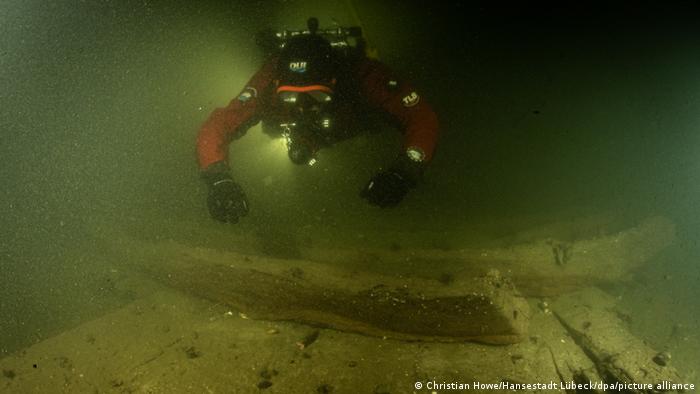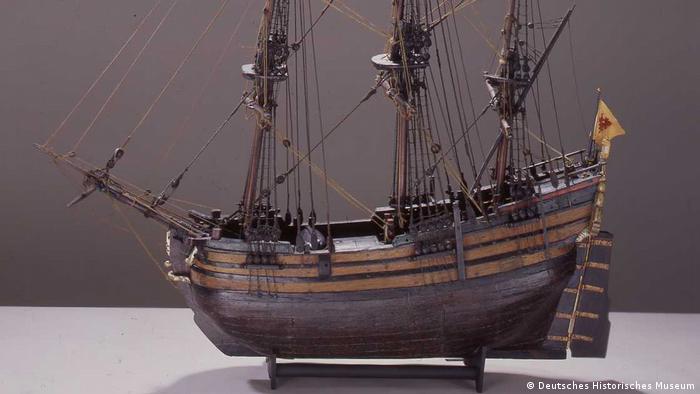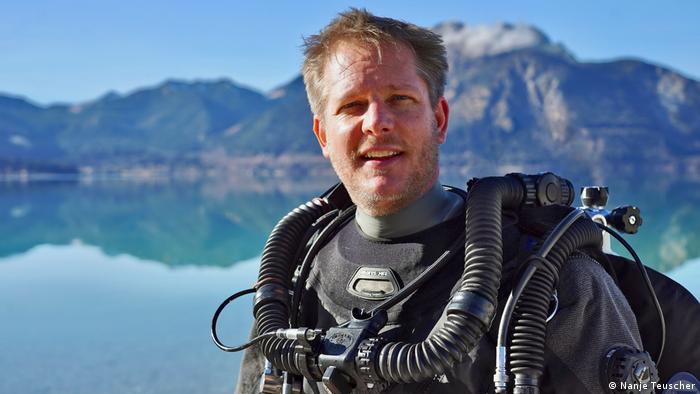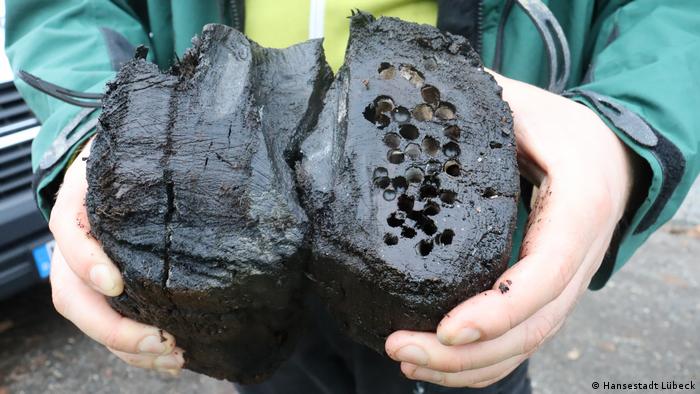ARCHEOLOGY
Why are there so many shipwrecks in the Baltic Sea?
A 17th century shipwreck recently found in Lübeck is one of many well-preserved wrecks at the bottom of the Baltic Sea. Why do they hold up so well there?

The roughly 400-year-old wreck of a 17th-century Hanseatic ship in Lübeck will now be salvaged
During a routine inspection of the Trave River in the northern German city of Lübeck last year, divers discovered the wreck of a nearly four-hundred-old sunken ship from the Hanseatic era. For the city, it was a sensational find and an important testimony to its own history. The wreck, which is partially exposed, faces a serious risk of erosion and divers have noted how the exposed parts were infested with shipworm. Thus, the city administration has now decided to salvage it.
However, discoveries of wrecks in the Baltic Sea are not uncommon, says underwater archaeologist Florian Huber.
"According to estimates, there are between 10,000 and up to 100,000 shipwrecks" scattered in the Baltic Sea. The wreck's find is sensational for two reasons: for its location in the western Baltic Sea and because it dates back to the end of the 17th century, the heyday of the Hanseatic city's maritime trade. "We don't know that many ships from that period," Huber told DW.
The Hanseatic league was a network of trade and merchant cities across northern Germany and around the Baltic Sea.

Model of a fluyt ship — a historical Dutch-made cargo vessel —
and which the Lübeck ship resembles
'A giant, ice-cold museum'
From a scientific perspective, such a find is "particularly exciting, because you can learn how ships were built back then, what technology was behind them," explains Huber, who has been exploring the world's oceans since 1992. He says the 150 or so barrels discovered on the Lübeck ship are equally important evidence of the past. "We learn something about the cargo that was traded at the time."
But why do wrecks and other long-sunken treasures hold up so well in the Baltic Sea? There are several reasons. Large parts of the inland sea of northern Europe are low in oxygen, cold, dark, and have a low saltwater content.

Underwater archaeologist Florian Huber has been a certified research diver since 2002
"The Baltic Sea is like a giant ice-cold museum — like a refrigerator that just preserves everything that falls in there," Huber says. Often, he says, it's not just the wood that's preserved, but the cargo as well. "Remnants of leather and textiles are often found." You often still find the goods — "sometimes the dried fish is still in the barrels. You find bones. Anything organic preserves very, very well underwater," Huber explains. And indeed, traces of quicklime, an important building material traded during the Hanseatic era, were discovered in the barrels of the Lübeck wreck as well.
"Wine, champagne, and beer bottles have been found in the Baltic Sea. Of course, they weren't that old, but I'd say 100 years, 200 years, and they were still edible. The champagne was auctioned off for tens of thousands."
Shipworm: biggest enemy of wooden wrecks
But the cold and dark don't just act as preservatives, they also help repel one of biggest fiends of shipwrecks namely, the shipworm, Teredo navalis. This particularly benefits the wooden wrecks slumbering on the Baltic Sea floor. Shipworm prefer oxygen-rich salt water. The further east you go in the Baltic Sea, the more fresh water accumulates there. "At the Gulf of Bothnia around Finland and Sweden, there is almost only fresh water, so there is only very little salt, and accordingly, the shipworm can no longer survive there."
That's why exceptionally well-preserved wrecks are usually found there. "In the Baltic Sea, there are sometimes wrecks that are two, three, four, or five hundred years old — and they are still standing upright with the masts. That's unique in the world."
This also explains why the ship parts found in Lübeck already look a bit "pitted." Lübeck is located in the western part of the Baltic Sea. In pictures published by the city of Lübeck, clear traces of the shipworm can be seen in the wood of the wreck. "In addition to the shipworm, however, wrecks are also threatened by climate change, fishing trawlers, and looting," Huber explains.

Traces of shipworm can be seen on remnants of the wreck
A press release from the Hanseatic city on the sensational find states that ocean currents and the shipworm are massively endangering the wreck. It is, therefore, necessary to protect and preserve the discovery because it is classified as a "unique and outstanding find for the history and archaeology of the western Baltic Sea."
Preserving wrecks is difficult
Conserving the wreck once it's salvaged will be a mammoth task facing the city of Lübeck. After all, anything that comes out of the water can't just be dried somewhere and then placed in a museum, Huber points out.
Wood, in particular, continues to work. After centuries of slumber on the seabed, it is saturated with water, and that needs to be brought out slowly. The water "has to be replaced with a liquid plastic so that the wood cells don't collapse. The process is complex and expensive."

One of the most spectacular finds in the Baltic Sea to date: the 17th century Swedish warship 'Vasa'
Other salvaged ships, such as the English Mary Rose or the Bremen cog, are impressive examples of the complexity in conserving old wrecks. In 1961, Sweden salvaged the warship Vasa, which had sunk in the 17th century, from the Baltic Sea and built a museum especially for it. The wreck had to be impregnated with polyethylene glycol for 17 years to prevent the wood from shrinking or cracking as it dried.
"It always has to be considered whether you can afford it and whether you want it," says Huber.
The city of Lübeck is determined to resurrect the wreck from the Trave River. "It should be salvaged and conserved as quickly as possible so that it can then be preserved as part of the history of the Hanseatic League and preserved for the future in all its authenticity."
This article was originally written in German.
No comments:
Post a Comment